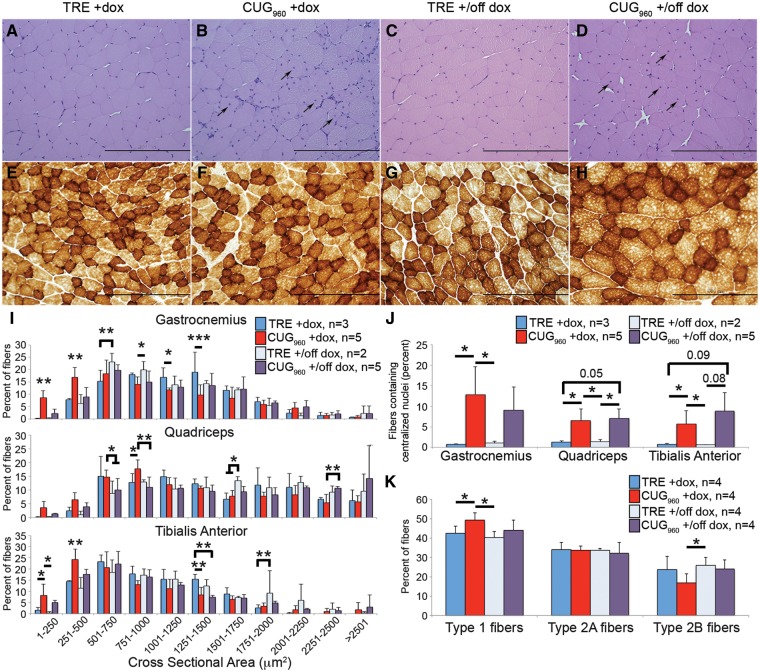Figure 3.
Repeat expressing mice exhibit severe histopathology. (A, B) Severe histopathology, characterized by increased percent of fibers with centralized nuclei [arrows in (B), quantified in (J)] and fiber size variability, was observed in gastrocnemius muscle of female CUG960+dox mice fed dox chow 10 weeks, beginning at PN1, compared with TRE +dox muscles. (C, D). Muscle histology improved when CUG960 transgene was turned off (+/off dox), resembling controls, however, nuclei remain centralized [arrows in (D), quantified in (J)]. Fiber CSA (250 fibers per sample, I) was significantly reduced in all muscle groups for female CUG960+dox animals compared with TRE +dox controls and improved in CUG960 +/off dox muscles. (E–H) Cytochrome oxidase staining for fiber type in female gastrocnemius muscle indicated subtle changes Type 1 oxidative fibers (dark brown) and Type 2B glycolytic fibers (light brown) in CUG960+dox mice compared with controls. (K) Quantification of fiber type percentage indicates increased percentage of oxidative fibers and decreased percentage of glycolytic fibers in CUG960+dox mice compared with controls. Fiber type percentage more closely resembles age-matched controls in CUG960+/off dox muscles. Bar, 200 μm. *P<0.05, **P<0.01, ***P<0.001.

